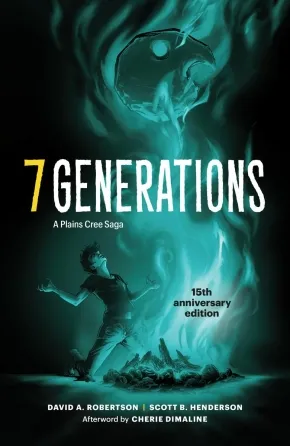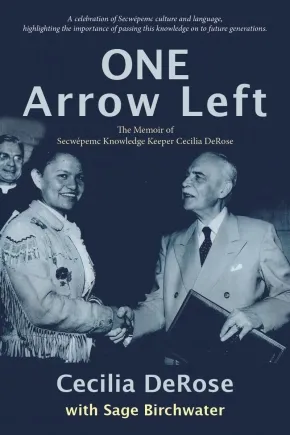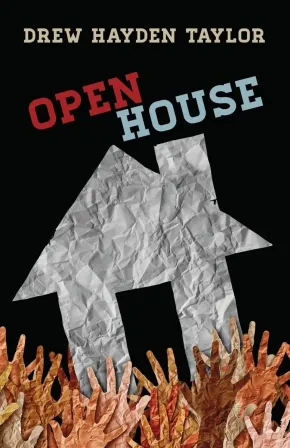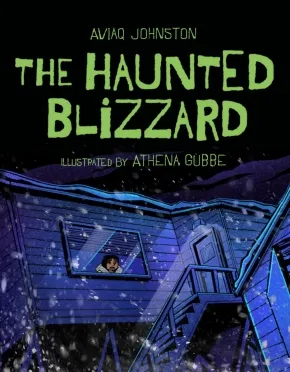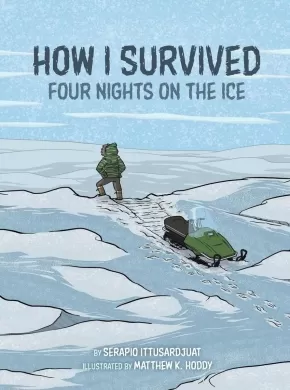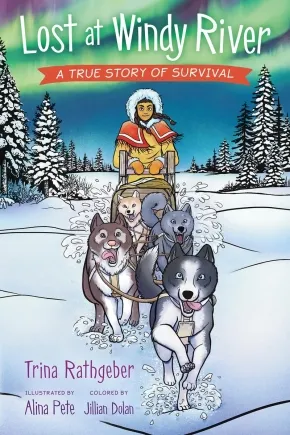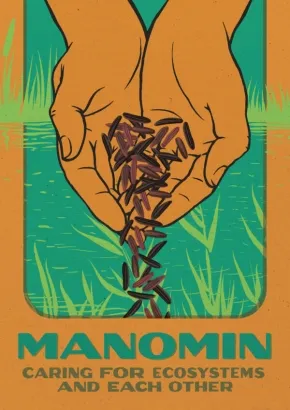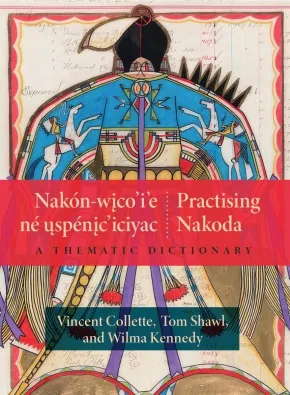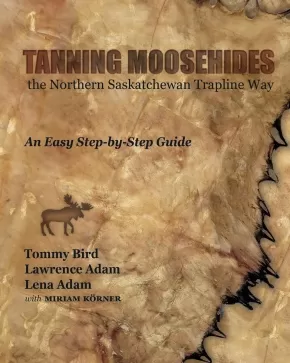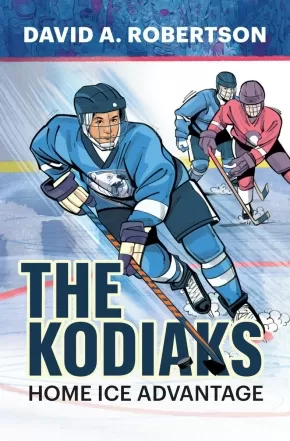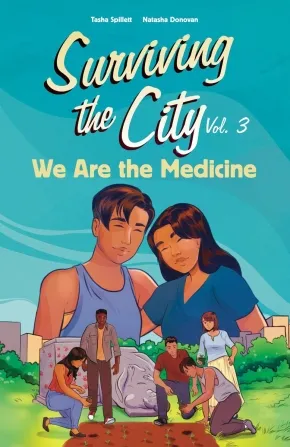
Canadian Indigenous Books for Schools
1
-
15
of
266 Results;
Sort By
Go To
of 18
FLASH SALE! Elements of Indigenous Style: A Guide for Writing By and About Indigenous Peoples - 2nd Edition
$20.97 $27.95
Editors:
Format:
Paperback
Text Content Territories:
Indigenous Canadian;
Reading Level: N/A
ISBN / Barcode: 9781550599459
Synopsis:
Synopsis:
The groundbreaking Indigenous style guide every writer needs.
The first published guide to common questions and issues of Indigenous style and process for those who work in words and other media is back in an updated new edition. This trusted resource offers crucial guidance to anyone who works in words or other media on how to work accurately, collaboratively, and ethically on projects involving Indigenous Peoples.
Editor Warren Cariou (Métis) and contributing editors Jordan Abel (Nisga’a), Lorena Fontaine (Cree-Anishinaabe), and Deanna Reder (Cree-Métis) continue the conversation started by the late Gregory Younging in his foundational first edition. This second conversation reflects changes in the publishing industry, Indigenous-led best practices, and society at large, including new chapters on author-editor relationships, identity and community affiliation, Two-Spirit and Indigiqueer identities, sensitivity reading, emerging issues in the digital world, and more.
This guide features:
- Twenty-two succinct style principles.
- Advice on culturally appropriate publishing practices, including how to collaborate with Indigenous Peoples, when and how to seek the advice of Elders, and how to respect Indigenous Oral Traditions and Traditional Knowledge.
- Terminology to use and to avoid.
- Advice on specific editing issues, such as biased language, capitalization, citation, accurately representing Indigenous languages, and quoting from historical sources and archives.
- Examples of projects that illustrate best practices.
Additional Information
208 pages | 5.50" x 7.50" | Paperback
7 Generations: A Plains Cree Saga: 15th Anniversary Edition
$36.99
Artists:
Format:
Paperback
Text Content Territories:
Indigenous Canadian; First Nations; Cree (Nehiyawak); Plains Cree;
ISBN / Barcode: 9781774920619
Synopsis:
Synopsis:
From the bestselling author of The Misewa Saga and When We Were Alone, comes 7 Generations: A Plains Cree Saga. This epic series of young adult graphic novels follows one Cree family over three centuries and seven generations.
Edwin, a Cree teenage boy, is struggling to feel connected to his family and his identity. From stories shared by his mother, Edwin learns about the history of his family, through the years of war, a smallpox epidemic, and residential schools, all the way through to the present and the conflicts Edwin faces in his own life.
Edwin must confront the past to heal in the present—but can his father, scarred by his own residential school experience, heal in time to help Edwin?
This special 15th anniversary edition brings together all four titles in the 7 Generations series, recoloured and relettered, with a preface from author David A. Robertson and an afterword from bestselling author Cherie Dimaline.
Educator Information
Recommended for ages 15 to 18.
Includes the stories in the 7 Generations series.
Stone introduces Edwin, a young man who must discover his family’s past if he is to have any future. Edwin learns of his ancestor Stone, a young Plains Cree man, who came of age in the early 19th century. When his older brother is tragically killed during a Blackfoot raid, Stone, the best shot and rider in his encampment, must overcome his grief to avenge his brother’s death.
In Scars, the story of White Cloud, Edwin's ancestor, is set against the smallpox epidemic of 1870-1871. After witnessing the death of his family one by one, White Cloud must summon the strength to find a new home and deliver himself from the terrible disease.
In Ends/Begins, readers learn about the story of Edwin’s father, and his experiences in a residential school. In 1964, two brothers are taken from the warm and loving care of their grandparents, and spirited away to a residential school. When older brother James discovers the anguish that his brother is living under, it leads to unspeakable tragedy.
In The Pact, the guilt and loss of James’s residential school experiences follow him into adulthood, and his life spirals out of control. Edwin, mired in his own pain, tries to navigate past the desolation of his fatherless childhood. As James tries to heal himself he begins to realize that, somehow, he must save his son’s life—as well as his own. When father and son finally meet, can they heal their shattered relationship, and themselves, or will it be too late?
Additional Information
144 pages | 6.50" x 10.00" | Paperback
La rafle des années 1960: et enfance volée aux jeunes Autochtones
$45.00
Format:
Paperback
Text Content Territories:
Indigenous Canadian;
ISBN / Barcode: 9781459419902
Synopsis:
Synopsis:
The award-winning Righting Canada's Wrongs series is now available in French for Immersion classrooms!
Starting in 1951, Indigenous children in Canada were taken by social welfare agencies from their families and placed in the care of non-Indigenous families. These children grew up without their birth families, cultural roots, and language. Many tried to run away and some died in the attempt. The taking of the children is known as the Sixties Scoop, though the policies and practices started before the 1960s and lasted long after. Today, Indigenous children are shockingly over-represented in the child welfare system across Canada.
Indigenous communities organized and fought back for their children. In 1985, an official government report condemned the practice.
In the 1990s, lawsuits were filed against the governments who had supported taking the children. In 2018 and 2019, Alberta, Saskatchewan and Manitoba apologized for their roles. In 2020, the Canadian government agreed to a settlement for survivors of the Scoop.
Through hundreds of photos and primary documents, readers meet many survivors of the Scoop. They learn how Indigenous communities fought back to save their children and won, and how Indigenous communities across Canada are working towards healing today.
Reviews
“The Sixties Scoop and the Stolen Lives of Indigenous Children embraces complexity in the history it tells, which is further enhanced by the inclusion of first-hand accounts from survivors of the Scoop. Their stories provide a plurality of experiences, adding additional nuance to the book… It is timely and well-researched, an excellent resource for teachers, librarians, and parents interested in educating young people about the harms these policies had – and continue to have – on Indigenous communities, as well as the continued overrepresentation of Indigenous children in care.” — Quill & Quire
Educator & Series Information
Recommended for ages 13 to 18.
This French book is part of the series Redresser les torts du Canada (Righting Canada's Wrongs series in French).
This book is available in English: Righting Canada's Wrongs: The Sixties Scoop and the Stolen Lives of Indigenous Children
This title is included in the Indigenous Books for Schools database from the Association of Book Publishers of BC as a recommended resource for Grades 10 to 12 for Family Studies, Social Studies, and Career Education.
Additional Information
8.50" x 11.69" | 300 Photographs | Paperback
One Arrow Left: The Memoir of Secwepemc Knowledge Keeper
$26.00
Format:
Paperback
Grade Levels: 12; University/College;
ISBN / Barcode: 9781773861586
Synopsis:
Synopsis:
Secwépemc elder, matriarch and knowledge-keeper Cecilia DeRose presents her powerful, heartfelt and inspiring memoir of overcoming racism and adversity—One Arrow Left is a celebration of Secwépemc culture, language and the importance of passing on this knowledge to future generations.
Born in 1935 in the village of Esket, Cecilia DeRose was welcomed into a loving, supportive Secwepemc family. Growing up in an isolated meadow, Cecilia was the fourth of ten children, spending much of her early years caring for younger siblings. Ranch life was in their blood; Cecilia’s mother, Amelia Joe, was the progeny of a white ranch hand, Joe Smith, and her Secwepemc mother, Martha Williams; her father, Matthew Dick, was well-known in the Williams Lake rodeo circuit and played for the famous Alkali Braves hockey team. Navigating the complexities of being a mixed-race family, both within and outside of the Secwepemc community, would be a lifelong source of tension, which Cecilia handles with grace, tenacity and humour.
Like their parents before them, Cecilia and her siblings were sent to St. Joseph’s Mission residential school near Williams Lake. At seven years old she eagerly awaited her turn to join her older sister and brother at the mission, where she could escape the drudgery of washing diapers and caring for her younger siblings at home. Nothing could have prepared her for the cruelty of institutionalized life. Dreams of an education that might lead to a career as a teacher, lawyer, or journalist were dashed. Residential school was hell, and Cecilia was left with the scars to prove it.
In 1956, Cecilia married non-Indigenous ranch hand Lenny DeRose and lost her Indigenous status. Nevertheless, on the insistence of her father Matthew Dick, Cecilia remained true to her Secwepemc roots and traditions. She eventually regained her status and became an ambassador of Secwepemc language and cultural practices. As she raised her own six children, she took great care to bestow in them the cultural teachings of the Secwepemc identity. She eventually taught the Secwepemcstin language in the public-school system, fulfilling her dream of teaching and reinforcing her belief that “we have one arrow left in our quiver and that’s education—we must use it wisely.”
Today, Cecilia is recognized nationally as an Indigenous knowledge keeper. She has provided cross-cultural training for hospitals, courts, and law enforcement institutions, and shared her knowledge on projects ranging from ethnobotany research to culturally safe elder care. In 2018, she received the Indspire Award for Culture, Heritage and Spirituality. In 2024, she was honoured by Thompson Rivers University with a Doctor of Letter, honoris causa, for her indispensable contributions to language revitalization.
Reviews
"This memoir would make a valuable addition to high school libraries, offering students insight into historical and contemporary perspectives on Indigenous people, places, events, and their lasting impacts. The knowledge Dick DeRose gained through her lived experiences became a foundation for her work as a respected language and cultural teacher." - Debra H., Elementary School Teacher, Indigenous Books for Schools
Educator Information
This book is included in the Indigenous Books for Schools database from the Association of Book Publishers of BC. It is recommended for Grade 12 Social Studies.
Additional Information
224 pages | 6.00" x 9.00" | Paperback
Open House
$18.95
Format:
Paperback
Text Content Territories:
Indigenous Canadian;
ISBN / Barcode: 9781772016567
Synopsis:
Synopsis:
Hoping to snag their perfect home in a red-hot housing market, an African Canadian man, a Chinese Canadian man, and a Jewish/Indigenous lesbian couple show up to an open house run by a white settler real estate agent. Each potential buyer feels most deserving of the prize. When a police incident outside traps them together in the house, debate erupts over which of their cultures has faced the most discrimination and exclusion. Passions run high and opinions clash. With wry humour, Open House deftly navigates current conversations about oppression, colonization, and middle-class aspirations.
Reviews
"This play connects well with Social Studies curriculum, as it allows us to understand the impact of negative comments, actions, and perceptions that continue to occur in society today. Open House encourages discussions about gender, identity, race, and colonization, allowing students to gain perspective and awareness." - Shaniah H., K-12 Teacher, Indigenous Books for Schools
Educator Information
This book is included in the Indigenous Books for Schools database from the Association of Book Publishers of BC. It is recommended for 11 and 12 for Drama and Social Studies.
Additional Information
5.82" x 8.26" | Paperback
The Haunted Blizzard
$22.95
Artists:
Format:
Hardcover
Text Content Territories:
Indigenous Canadian; Inuit;
ISBN / Barcode: 9781772275605
Synopsis:
Synopsis:
A teenage girl walks home in a burgeoning blizzard, happy to have an unexpected snow day. Ignoring an Elder’s warning about the terror the blizzard holds, she finds herself alone in her home with an unseen presence stalking and tormenting her. What does it want? And will she survive?
Reviews
"Aviaq Johnston’s graphic novel The Haunted Blizzard draws readers into a chilling tale of mystery and unease. The story follows a young girl, Nita, sent home when school closes due to a blizzard. Along the way, her grandmother warns her the storm is filled with dark forces, but Nita brushes off the caution and continues home alone. As the storm rages, Nita soon realizes she should have heeded her grandmother’s words—something sinister is lurking in the blizzard. Johnston blends suspense with cultural wisdom in this gripping, forty-page story that leaves readers on edge and eager for more." - Debra H., Elementary School Teacher, Indigenous Books for Schools
Educator Information
Recommended for ages 12 to 18.
This title is included in the Indigenous Books for Schools database from the Association of Book Publishers of BC. It's recommended for Grades 8 to 12 for Art, Drama, and English Language Arts.
Additional Information
40 pages | 7.00" x 9.00" | Hardcover
How I Survived: Four Nights on the Ice (PB)
$18.95
Artists:
Format:
Paperback
Text Content Territories:
Indigenous Canadian; Inuit;
ISBN / Barcode: 9781772274264
Synopsis:
Synopsis:
After his snowmobile breaks down halfway across the sea ice on a trip back from a fishing camp, Serapio Ittusardjuat recounts the traditional skills and knowledge he leaned on to stay alive.
This harrowing first-person account of four nights spent on the open sea ice—with few supplies and no water—shows young readers the determination and strength necessary to survive in the harsh Arctic climate, even when the worst occurs.
Awards
- 2022 Forest of Reading—Silver Birch Express Award
Reviews
"[T]he graphic novel How I Survived is a true story of Arctic survival written by Serapio Ittusardjuat, an Inuk stone carver and former mechanic.... This beautifully designed, highly engaging graphic novel should engross both reluctant readers and those seeking adventure." - Quill & Quire
Educator Information
Recommended for ages 12+
The original hardcover version was included in the Indigenous Books for Schools 2020/2021 resource list as being useful for grades 6 to 9 for English Language Arts and Social Studies.
Additional Information
48 pages | 7.25" x 9.75"
Lost at Windy River: A True Story of Survival
$19.95
Format:
Paperback
Text Content Territories:
Indigenous Canadian; First Nations; Cree (Nehiyawak); Woodland Cree; Rocky Cree; Peter Ballantyne Cree Nation;
ISBN / Barcode: 9781459832268
Synopsis:
Synopsis:
Iskwew Pithasew nitisithikason. My name is Lady of the Thunderbird, and this is my story.
It takes courage and bravery to survive in the barrens.
In 1944, thirteen-year-old Ilse Schweder got lost in a snowstorm while checking her family's trapline in northern Canada. This is the harrowing story of how a young Indigenous girl defies the odds and endures nine days alone in the unforgiving barrens. Ilse faces many challenges, including freezing temperatures, wild animals, snow blindness and frostbite. With no food or supplies, she relies on Traditional Indigenous Knowledge passed down from her family. Ilse uses her connection to the land and animals, wilderness skills and resilience to find her way home.
This powerful tale of survival is written by Ilse Schweder's granddaughter.
Reviews
“Colorful illustrations in classic comic-book style help readers explore the challenging landscape. An excellent choice for a book report and good addition to a children’s nonfiction collection.”- School Library Journal (SLJ), starred review
Educator Information
Recommended for ages 9 to 12.
Fountas & Pinnell Text Level Gradient: T
Lexile measure: GN700L
Guided Reading Level: T
This book is included in the Indigenous Books for Schools database from the Association of Book Publishers of BC. It is recommended for Grades 4 to 9 for English Language Arts, Physical and Health Education, and Social Studies.
Additional Information
96 pages | 6.00" x 9.00" | Paperback
Manomin: Caring for Ecosystems and Each Other
$29.95
Editors:
Format:
Paperback
Text Content Territories:
Indigenous Canadian; First Nations; Anishinaabeg;
ISBN / Barcode: 9781772840902
Synopsis:
Synopsis:
Reclaiming crops and culture on Turtle Island
Manomin, more commonly known by its English misnomer "wild rice," is the only cereal grain native to Turtle Island (North America). Long central to Indigenous societies and diets, this complex carbohydrate is seen by the Anishinaabeg as a gift from Creator, a "spirit berry" that has allowed the Nation to flourish for generations. Manomin: Caring for Ecosystems and Each Other offers a community-engaged analysis of the under-studied grain, weaving together the voices of scholars, chefs, harvesters, engineers, poets, and artists to share the plant's many lessons about the living relationships between all forms of creation.
Grounded in Indigenous methodologies and rendered in full colour, Manomin reveals and examines our interconnectedness through a variety of disciplines-history, food studies, ethnobotany, ecology-and forms of expression, including recipes, stories, and photos. A powerful contribution to conversations on Indigenous food security and food sovereignty, the collection explores historic uses of Manomin, contemporary challenges to Indigenous aquaculture, and future possibilities for restoring the sacred crop as a staple.
In our time of ecological crisis, Manomin teaches us how to live well in the world, sustaining our relations with each other, our food, and our waterways.
Reviews
"This book is absolutely amazing and one of the most original collections that I have read in many years. Intended for everyone who inhabits Turtle Island-Indigenous and settler alike-Manomin encourages readers to develop deeper relationships and understandings by listening to Elders and the land. I believe Manomin will transform Indigenous scholarship." — Michael Dockry, University of Minnesota
"Manomin teaches us much; how to observe, the need for biodiversity, and the understanding that there will be rice somewhere else, on different years, based on water levels. Manomin has provided food during the harshest of times. We were told that we should care for our water and there would be rice. There are lakes where Manomin has been drowned by the state and provincial authorities, raising water levels for recreational boats. For many years the Mille Lacs band of Anishinaabe tried to get the water levels corrected for the rice to flourish on Onamia and Omeme Lakes. At one of those lakes, the water levels went down in a drought, and the Manomin returned, seventeen years later. At another lake it was fifty years later. The Manomin returned when the conditions were right. That reminds us, like this book, of the resilience of seeds, the resilience of life, and our agreement to care for all. This book is a blessing of teachings and acknowledgment for the great gift of Manomin." — Winona LaDuke, To Be a Water Protector: Rise of the Wiindigoo Slayers
"Manomin: Caring for Ecosystems and Each Other is a collection of essays, recipes, and Anishinaabe traditional ecological understandings co-authored by the Niisaachewan Anishinaabe Nation and Elders from the community. This book compels the reader to consider plants as sentient beings in connection with the “Seven Generations Principle,” connecting us to the belief that “we are all related and life is sacred.” Each essay exploration is paired with glossy colour and black-and-white photos of historical and contemporary plant knowledge connected to “wild rice” with accompanying illustrated recipes centred in Indigenous foodways.
There is also a specific section on copyright addressing Indigenous understandings, intellectual and Traditional Knowledge and language, which can be considered groundbreaking as a precedent in itself. This book can be enjoyed over and over again, as there is so much that could be transformative to our understanding of plant and human relationships." — Lori B., Indigenous Educator & Administrator, Indigenous Books for Schools
Educator Information
Topics: Environmental Studies, History, Indigenous Studies, Decolonization, Agriculture and Food, Ethnobotany, History, Food Studies.
Table of Contents
List of Illustrations
A Note on Language by Brittany Luby and Margaret Lehman
Introduction by Brittany Luby, Samantha Mehltretter, and Margaret Lehman with Niisaachewan Anishinaabe Nation
Ch.1 Manitou Gitaggan, the Great Spirit’s Garden by Kezhii’aanakwat Ron Kelly, Giizhiigokwe Sandra Indian, Patees Dorothy Copenace, and Kathi Avery Kinew
Ch.2 Migration by Edward Benton-Banai
Ch.3 Seeds and Soils by Victoria Jackson
Manomin and Bergamot by Sean Sherman
Ch.4 Manomin as Teacher by Brittany Luby with Niisaachewan Anishinaabe Nation
Images from Anishinaabe-Aki: Harvest
Ch.5 Relational Vocabularies by Joseph Pitawanakwat
Manomin, Berries, and Love by Michelle Johnson-Jennings, PhD
Ch.6 Environmental Change, Environmental Care by Samantha Mehltretter and Andrea Bradford with Niisaachewan Anishinaabe Nation
Images from Anishinaabe-Aki: The Seasons by Andrea Bradford
Ch.7 Disconnection by Hannah Tait Neufeld
Manomin and Mushrooms by Shane Chartrand
Ch.8 Treaty and Mushkiki by Jana-Rae Yerxa and Pikanagegaabo, William Yerxa
Ch.9 Promise by Kristi Leora Gansworth
Epilogue by Andrea Bradford and Brittany Luby
Appendix 1: A Recipe for Corn Soup
Appendix 2: A Note on Indigenous Language Rights
Glossary by Jane Mariotti
Contributors
Notes
Selected Bibliography
This book is included in the Indigenous Books for Schools database from the Association of Book Publishers of BC. It is recommended for Grade 9 to 12 classrooms for English Language Arts, Family Studies, Foods, Science, and Social Studies.
Additional Information
240 pages | 6.00" x 8.50" | 40 colour illustrations, 2 maps, index, bibliography | Paperback
Nakón-wico'i'e né uspénic'iciyac / Practising Nakoda: A Thematic Dictionary
$27.95
Format:
Paperback
Text Content Territories:
Indigenous Canadian; First Nations; Assiniboine (Nakoda Oyadebi);
ISBN / Barcode: 9781779400185
Synopsis:
Synopsis:
A user-friendly guide that teaches core Nakoda vocabulary and how to use it in conversation
Practising Nakoda contains basic Nakoda vocabulary, organized into 30 themes (such as animals, clothing, directions, and time) and divided into sections meant to enhance daily and ceremonial communication (including dances, ceremonies, and ceremonial clothing). The guide provides words for every theme from which the reader can forge a general view of word formation patterns. In a thematic dictionary, words are not organized alphabetically but are grouped according to the root element or their meaning. Since Nakoda is a polysynthetic language where words are often built up with many elements that attach to the root, this is a necessary format that enhances the learner’s “morphological awareness.” The guide will help learners identify the root of each word, along with the “morphemes,” critical to the successful learning of the Nakoda language, and the comprehension of complex vocabulary.
Reviews
"Nakón wico’i’e né uspénic’iciyac / Practising Nakoda: A Thematic Dictionary is a user-friendly dictionary created to support learners of the endangered Nakoda language. More than just a list of words, this book helps users understand how to build sentences and use the language in real-life situations, even without a fluent speaker to guide them. The chapters are organized by theme, making it easier for learners to focus on everyday topics and vocabulary. This dictionary is meant to be a practical starting point for those beginning their Nakoda language journey. It was created with the help of many different Nakoda speakers, whose voices and knowledge shaped the content. This dictionary can be used for self-study, in classrooms, or as a community resource to support language programs. Practising Nakoda is a helpful tool for anyone who wants to begin learning and using Nakoda in their daily life." - Jackie L., Educator & Indigenous Voice Consultant, Indigenous Books for Schools
Educator Information
Table of Contents
Foreword
Elements of Nakoda Grammar
Abbreviations
Greetings and Forms of Address
Human Body
Food and Drinks
Clothing and Getting Dressed
Living Arrangements
Human Characteristics
Feelings, Instincts, Emotions, and Motives
Thinking
Behaviour and Mental Disposition
Abilities and Talents
Expressing Thoughts and Feelings
Making Evaluations
Family and Friends
Social Relations
Education and Schooling
Professions and Trades
Agriculture, Gardening, and Ranching
Banking, Money, and Commercial Transactions
Leisure and Sports
Dances and Ceremonies
Spirituality and Culture
Communication
Nationalities and Settlements
Geography and Landscape
Weather, Natural Phenomena, and Substances
Fauna and Flora
Transportation and City Infrastructure
Quantities
Space and Time
Structural Words
Bibliography
About the Authors
This book is included in the Indigenous Books for Schools database from the Association of Book Publishers of BC. It is recommended for Grades 9 to 12 for Language studies.
Additional Information
216 pages | 5.51" x 7.51" | Paperback
Roth
$29.99
Artists:
Format:
Paperback
Text Content Territories:
Indigenous Canadian; First Nations; Dene; Tlicho (Dogrib);
ISBN / Barcode: 9781989754221
Synopsis:
Synopsis:
Unless there is snow on the ground, never speak their name aloud.
The more they eat the hungrier they become, and they are starving.
They were meant to stay undisturbed, their dismembered limbs scattered, frozen under the permafrost, but as is always the way, the greed of industry has unburied them once more. Now, the most feared, the Wheetago, have returned, using their powers to call back the Na acho, cannibalistic giants once banished by Dene deities.
The revered hero known as the Child Finder who is fighting to cling to his humanity after a Wheetago attack, a mother and her young son, and a desperate band of convicts, form an uneasy alliance to survive the Wheetago horrors now awakened.
ROTH, from award-winning, bestselling Tlicho Dene author Richard Van Camp, and visionary illustrator Christopher Shy is the first graphic novel in the Wheetago War series.
Reviews
"A storyteller is what Richard Van Camp is—a storyteller par excellence. He tells us of family and traditions, of past and present spirits. Through Roth, he weaves his magic yet again, entwined with the richly atmospheric and terrestrial palette of Christopher Shy. With the Wheetago War series, kind-hearted and horrifically evil come together to hold you fully embraced, page after page."– Kent Williams artist & illustrator X-Men, Batman
"This spectacular, boundary-pushing book will change the way you look at graphic novels.Rooted in ancient and powerful narratives, this captivating saga will have you holding your breath until it releases you from its grip at the end, only to want more.”- Waubgeshig Rice, author Moon of the Turning Leaves
"In a post-apocalyptic future the Wheetago, supernatural beings with insatiable appetites buried long ago, have been awoken and are ravaging the world. Ross, a folk hero known as the Child Finder, struggles to hold on to his humanity after being bitten in a Wheetago attack. In order to recover his human form and find his family, Ross forms an alliance with a mother and son and a group of escaped convicts who vow to help him. These unlikely allies must overcome their suspicions of one another in order to fight the forces of ancient evil that threaten their survival and the survival of all humanity. Dark and evocative illustrations bring the epic battles to life and create an otherworldly atmosphere. The first in the Wheetago War series, this stunning graphic novel offers an introduction to Traditional Tlicho Dene Stories in an engaging format, while also exploring themes of trust, greed, mutual aid, and self-sacrifice." - Dionne L.-B., High School Librarian, Indigenous Books for Schools
Educator & Series Information
Recommended for ages 15+.
This book is the first book in the Wheetago War series.
This book is included in the Indigenous Books for Schools database from the Association of Book Publishers of BC. It is recommended for Grades 10 to 12 for Art, English Language Arts, and Social Studies.
Additional Information
192 pages | 6.62" x 10.25" | Paperback
Tanning Moosehides: The Northern Saskatchewan Trapline Way
$49.95
Format:
Coil Bound
Text Content Territories:
Indigenous Canadian; First Nations; Dene; Denesuline (Chipewyan); Fond du Lac Denes??iné First Nation; Cree (Nehiyawak); Woodland Cree; Rocky Cree; Peter Ballantyne Cree Nation;
ISBN / Barcode: 97817786903
Synopsis:
Synopsis:
Denesųłiné Elders Lawrence and Lena Adam have been tanning hides and sharing their knowledge with others for more than four decades. Woodland Cree knowledge carrier Tommy Bird helped his family tan hides on the trapline as a young boy. Together they share their lifetime of experience to guide a new generation of hide tanners to keep the tradition alive. The trouble-shooting tips and hands-on advice in this book will help you to make your own bone tools and turn raw moosehides into smoke-tanned hides soft enough to sew into mitts or moccasins. Combining traditional knowledge with easy-to-follow instructions and detailed colour photos, Tanning Moosehides the Northern Saskatchewan Trapline Way is a practical guide you will refer to again and again.
Educator Information
The publisher recommends this resource for ages 10+
Recommended in the Indigenous Books for Schools catalogue as a valuable resource for Art, Science, and Social Studies in grades 5 to 12.
Themes: Animals, Arts and Culture, Cultural Teachings, Fashion, Traditional Knowledge.
Additional Information
64 pages | 8.50" x 11.00" | Spiral Bound
The Cannibal
$22.95
Artists:
Format:
Paperback
Text Content Territories:
Indigenous Canadian; Inuit;
ISBN / Barcode: 9781772274813
Synopsis:
Synopsis:
Based on an Inuit traditional story passed down orally for generations, The Cannibal tells the horrific tale of a family experiencing starvation when the animals they rely on for survival disappear. While the wife stays alive by eating plants she gathers daily, the husband does the unthinkable, resorting to murder and cannibalism. Horrified, and terrified for her life, the wife eventually finds herself alone in camp with her husband. She knows what will happen to her if she does not find a way to escape. Hatching a plan, the exhausted wife embarks on the journey with her murderous husband in pursuit. After safely arriving at a nearby camp, she shares the story of what has become of her camp, and her own children. Soon the husband arrives, and the camp must decide how to deal with the cannibal. Both horrific and poignant, this cautionary traditional story provides a window into the at times harsh realities of traditional life.
Reviews
"The Cannibal by Solomon Awa and Louise Flaherty is a stark and compelling novel centred on an Inuit family facing extreme survival challenges in the Arctic. When the family’s father, driven by desperation, begins to resort to cannibalism to stay alive, the story delves into harrowing themes of survival, morality, and the impact of isolation on human behaviour. This topic is suitable for an older audience, not younger students." - David D., Indigenous Educator & Administrator, Indigenous Books for Schools
Educator Information
The publisher labels this work as an "Adult Graphic Novel."
Recommended in the Indigenous Books for Schools catalogue as a valuable resource for grades 10 to 12 for English Language Arts and Social Studies.
Themes: Animals, Death, Environment, Loss, Reconciliation
Caution: Contains cannibalism
Additional Information
44 pages | 7.00" x 10.50" | Paperback
The Kodiaks: Home Ice Advantage
$12.95
Format:
Paperback
Text Content Territories:
Indigenous Canadian;
ISBN / Barcode: 9781774921012
Synopsis:
Synopsis:
Hockey fans will love this action-packed middle-grade novel about teamwork, overcoming adversity, and being proud of who you are and where you come from.
Everything is changing for 11-year-old Alex Robinson. After his father accepts a new job, Alex and his family move from their community to the city. For the first time in his life, he doesn’t fit in. His fellow students don’t understand Indigenous culture. Even a simple show of respect to his teacher gets him in trouble.
Things begin to look up after Alex tries out for a local hockey team. Playing for the Kodiaks, Alex proves himself as one of the best, but he becomes a target because he’s Indigenous. Can Alex trust his teammates and stand up to the jerks on other teams? Can he find a way to fit in and still be who he’s meant to be?
Reviews
“Conflicts that make you think. David expertly weaves entertainment and humour with life lessons—and suggestions for making the world a better place.” — Kevin Sylvester, author/illustrator of The Hockey Super-Six
"Hockey fans will love this action-packed middle grade novel...a really nice addition to the field." — School Library Journal
Educator & Series Information
Recommended for ages 9 to 12.
This book is part of the Breakout Chronicles series.
Big Ideas: Aspects of Indigenous Cultures, Worldviews, Teachings and Protocols, Contemporary Setting, Diverse and Inclusive Representation, Identity, Social Emotional Learning, Character Education, Courage, Friendship, Self-Esteem and Self-Reliance, Social Justice, Discrimination, Impacts of Colonization and Colonialism, Prejudice and Racism, Bullying, Resilience.
Recommended in the Indigenous Books for Schools catalogue as a valuable resource for English Language Arts in grades 6 to 10.
Content Warning: Racism, stereotypes, culturally offensive language, violence, and bullying
This book is available in French: Les Kodiaks: L'avantage de la glace
Additional Information
184 pages | 5.25" x 8.00" | Paperback
We Are the Medicine: Surviving the City Vol. 3
$21.95
Artists:
Format:
Paperback
Text Content Territories:
Indigenous Canadian; First Nations; Cree (Nehiyawak); Anishinaabeg;
ISBN / Barcode: 9781774921104
Synopsis:
Synopsis:
Miikwan and Dez are in their final year of high school. Poised at the edge of the rest of their lives, they have a lot to decide on. Miikwan and her boyfriend, Riel, are preparing for university, but Dez isn’t sure if that’s what they want for their future.
Grief and anger take precedence over their plans after the remains of 215 children are found at a former residential school in British Columbia. The teens struggle with feelings of helplessness in the face of injustice. Can they find the strength to channel their frustration into action towards a more hopeful future?
We Are the Medicine is the moving final volume of the best-selling Surviving the City series.
Reviews
"Tasha's graphic novel gives us an unflinching view of youth sovereignty and the reclamation of Indigenous philosophy and sacred spaces in Winnipeg's core. Guided by an Elder, the friends at the centre of the story confront uncomfortable truths that have sustained our colonial past, riding on the edge of emotions and activism to uphold the integrity of their ancestors. A must-read for all youth who want to build an equitable, just society." — Elder Albert McLeod, author of Between the Pipes
“A fantastic read for teens to learn about Indigenous issues through a clear and accurate representation.” — Youth Services Book Review
Educator & Series Information
Recommended for ages 12 to 18.
This is the third volume in the Surviving the City graphic novel series, which is also part of the Debwe Series.
Surviving the City is a contemporary graphic novel series about young Indigenous women navigating their way in an urban environment. It includes:
Surviving the City
From the Roots Up
We Are the Medicine
A Teacher Guide is available: Surviving the City Teacher Guide: Exploring Identity, Allyship, and Social Action for Meaningful Change in Grades 7-12
Recommended in the Indigenous Books for Schools catalogue as a valuable resource for English Language Arts and Social Studies in grades 8 to 12.
Caution: This work's topics include residential schools, death, violence, police brutality, and racism.
Themes: Coming of Age, Community, Connection to Culture, Healing, Residential Schools.
Additional Information
64 pages | 6.50" x 10.00" | Paperback
Sort By
Go To
of 18




